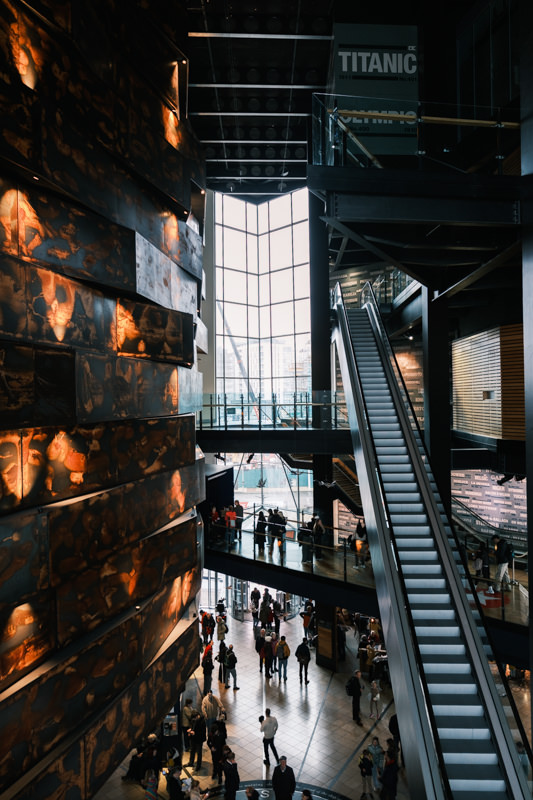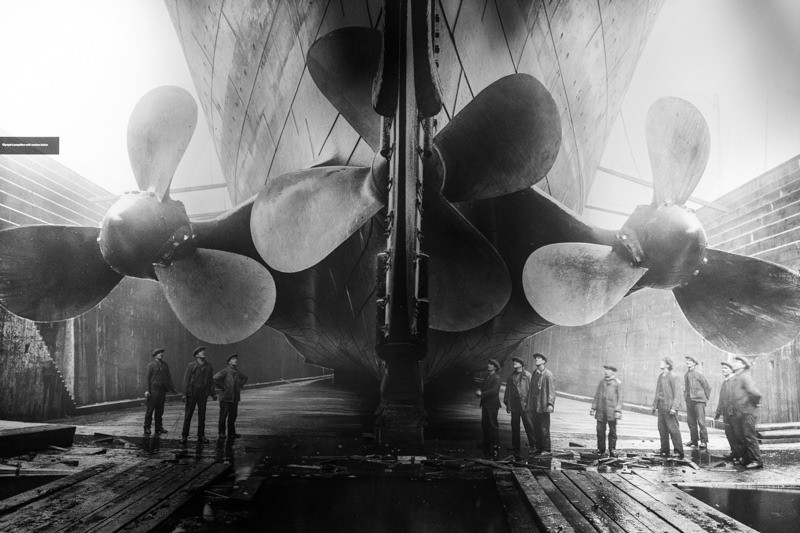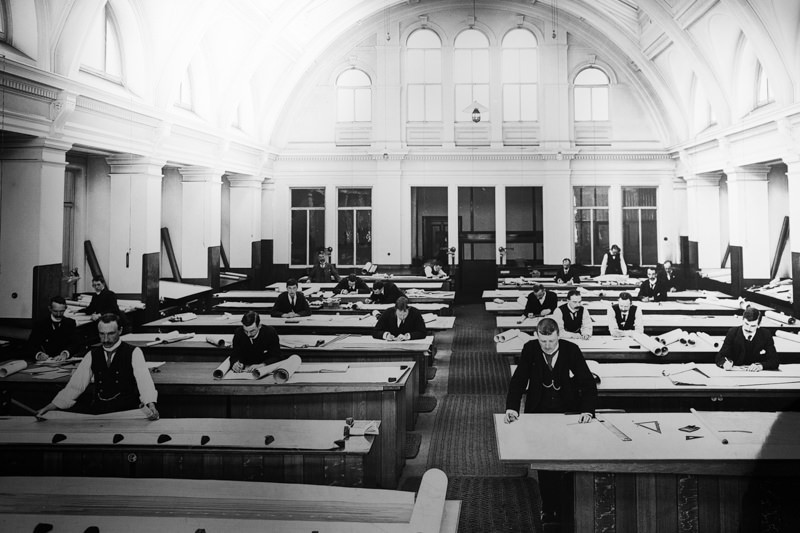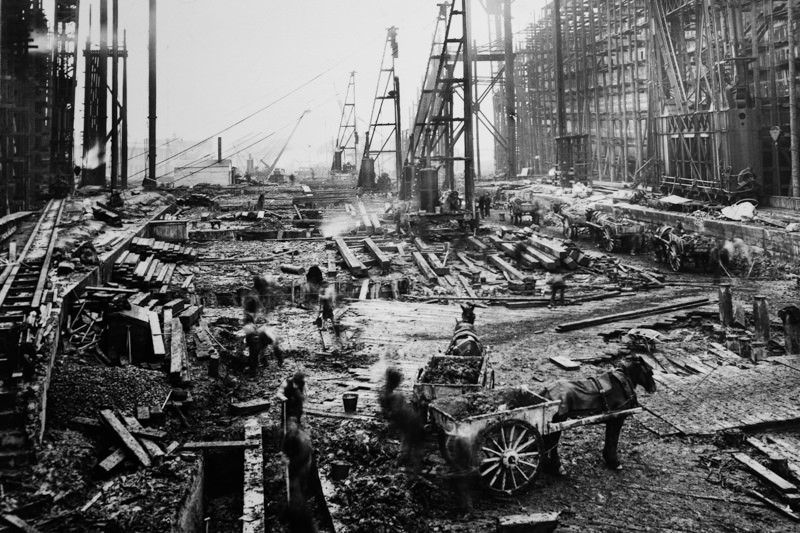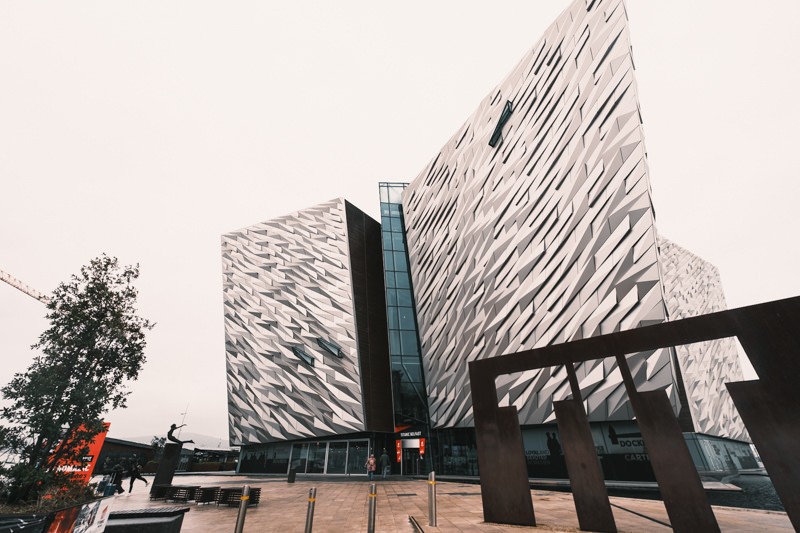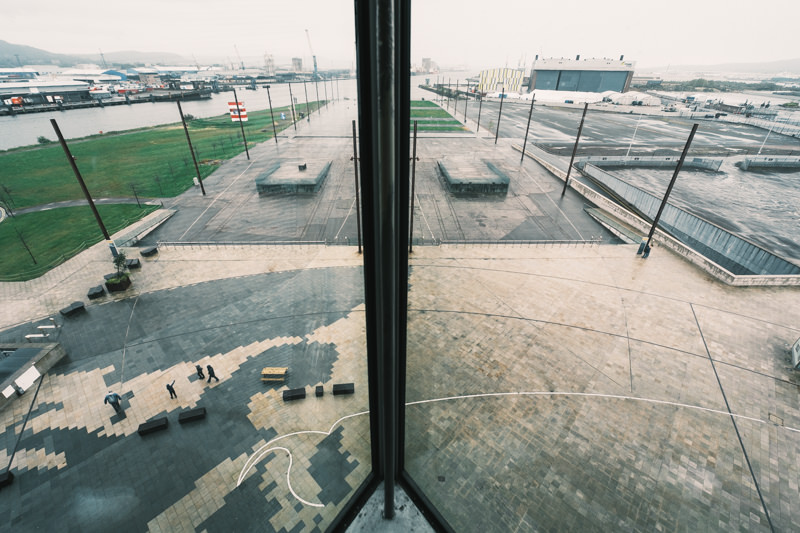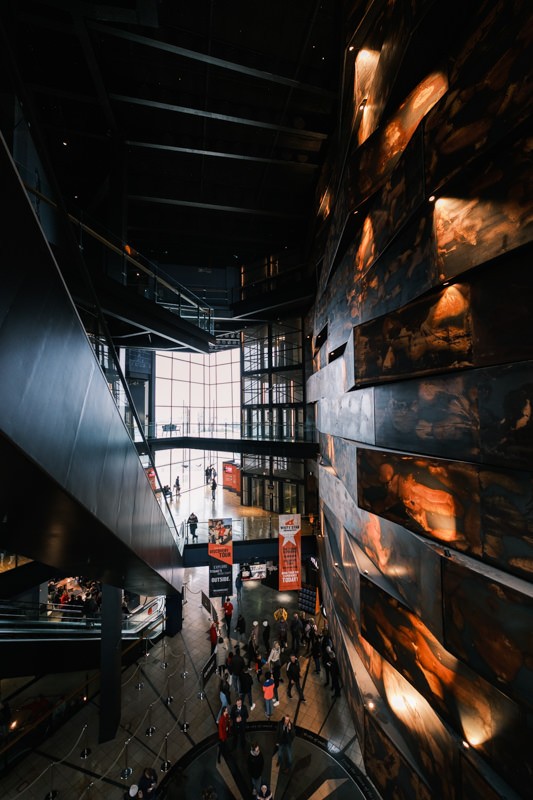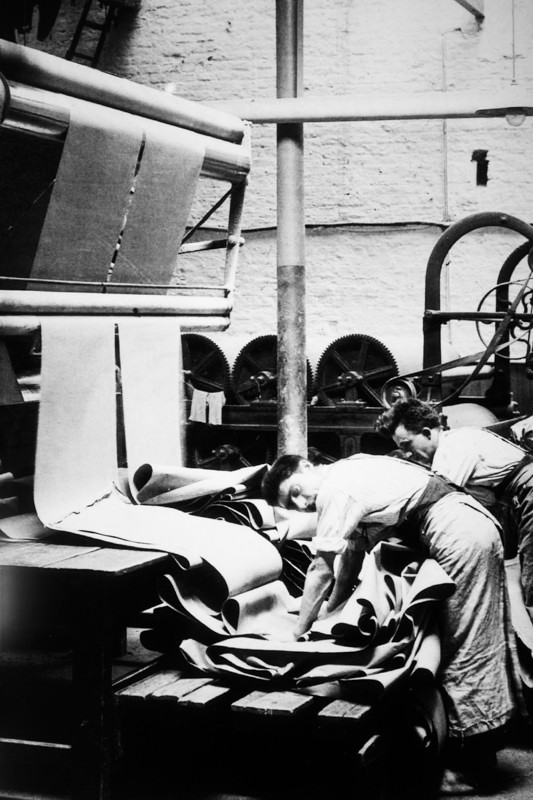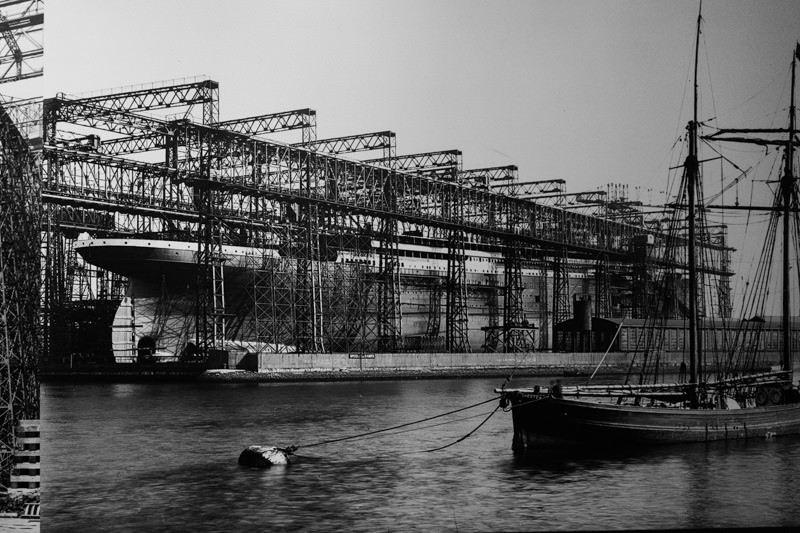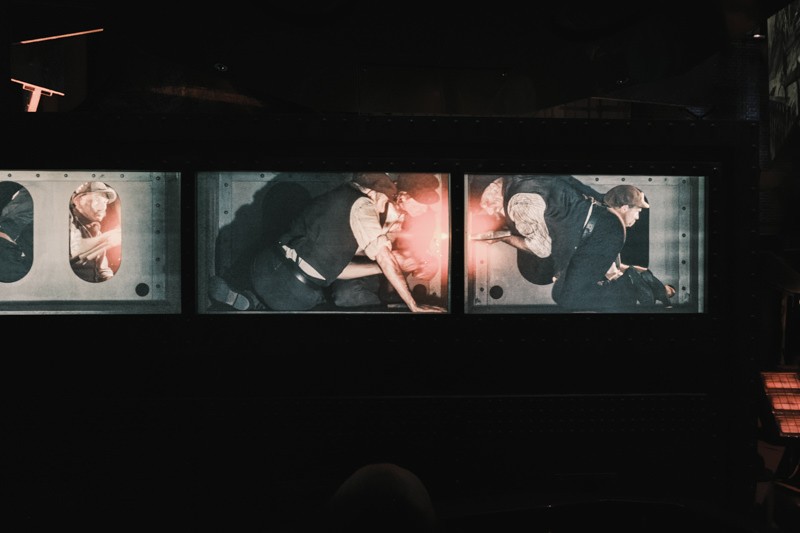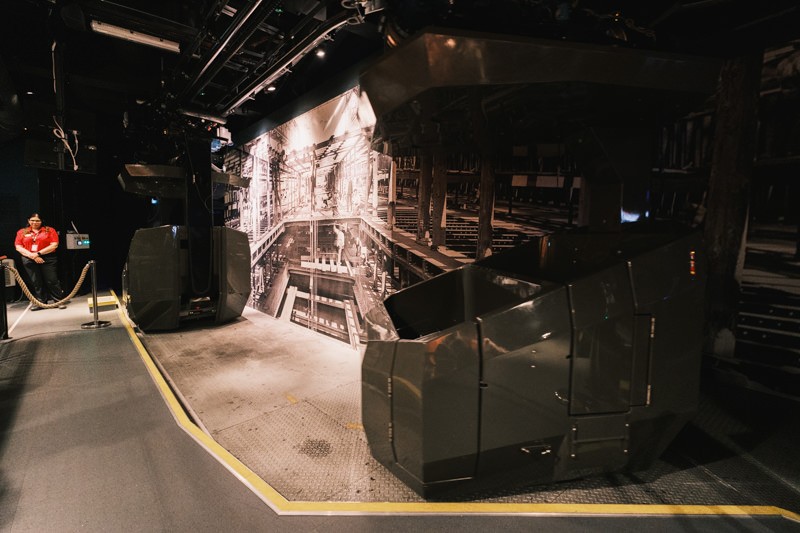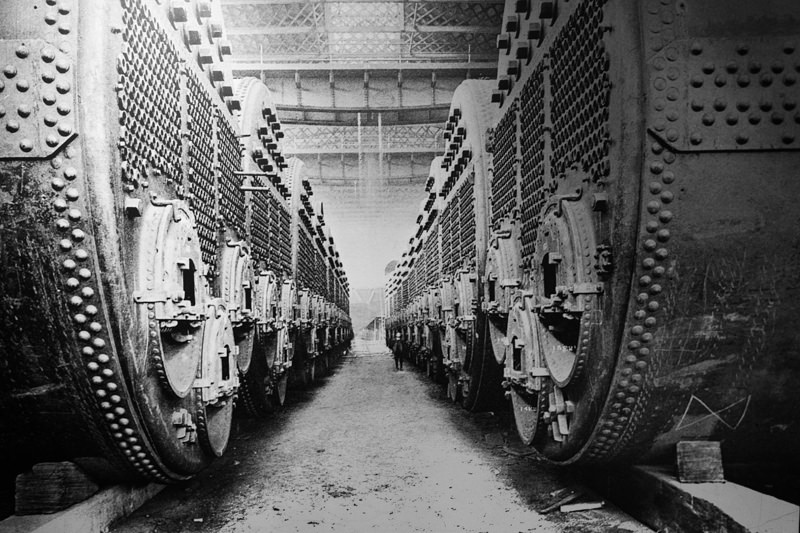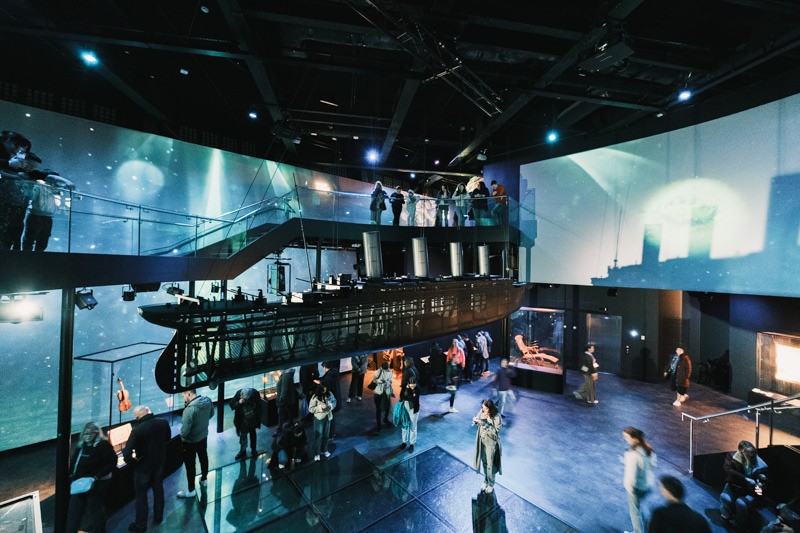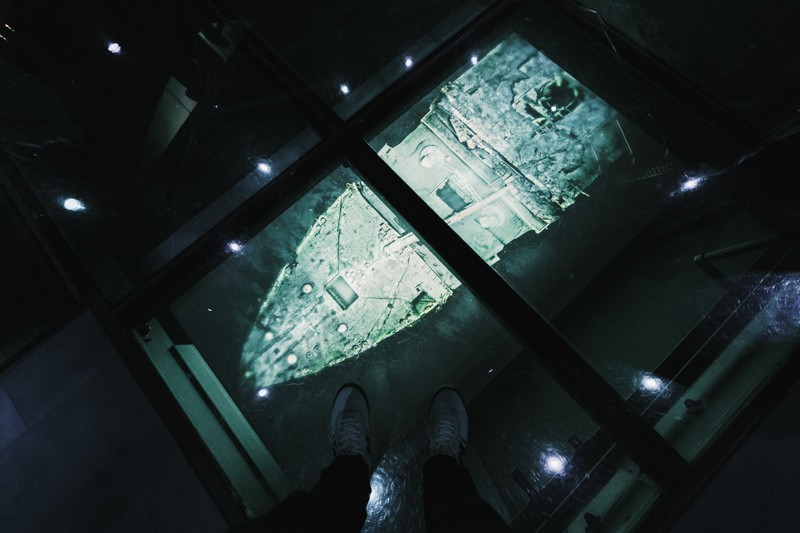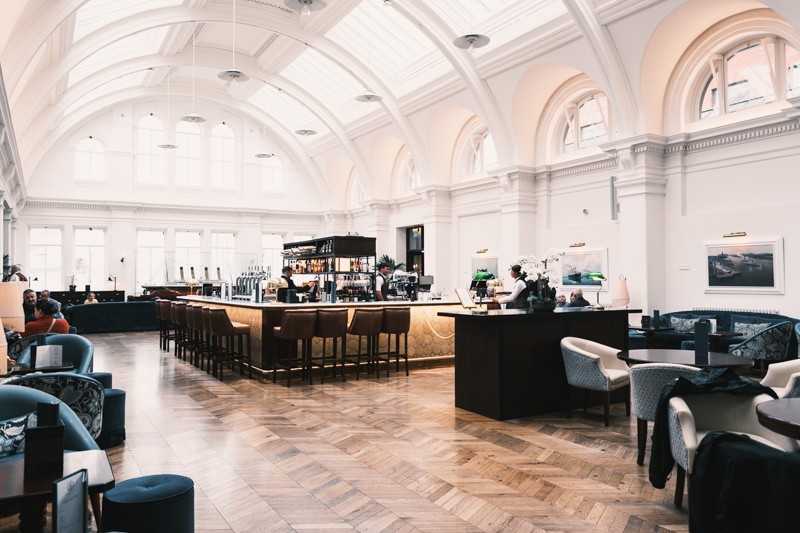Titanic Belfast: Visiting The Untold Half Of The Titanic Story
Titanic Belfast: Visiting The Untold Half Of The Titanic Story
We all know the RMS Titanic story. The unsinkable ship felled by hubris to an iceberg spotted too late. A love story too good to be true only a floating door just too cramped for two, could keep the star-crossed lovers apart. Until the final dream sequence, at least.
But when we think of the Titanic, it’s mostly about the part where it goes down. What the Titanic Experience in Belfast offers is a deeper story that goes back to the beginning, and the immense, almost impossible effort it took to bring such a ship into existence in the first place.
To me, a visit to the Titanic Belfast should be an essential part of any Belfast itinerary for its fascinating insight into the city of Belfast and its entwined shipbuilding history.
The Guided Discovery Tour
The Titanic Experience, which is what the official tickets covers, is a self-guided exploration into the sights, sounds, smells and stories of the ship, as well as the people and city that made the ship. It takes about 2-3 hours to go through, but you can easily spend longer.
Before diving into the Titanic Experience, I started with the guided walking tour that begins in the adjoining Titanic Hotel, which was also the old administrative offices of the Harland & Wolff shipyard. What makes this hotel a unique stay is that it was repurposed from the historical space rather than being built from scratch. Hundreds of archival photographs line the hallways of the building, which much of the main space looking the same today as it did over a century ago.
The tour goes through the old offices, now lounges, where the men in charge like Lord Pirrie and Alexander Carlisle argued over issues like lifeboat capacities. The original ship designer, Carlisle had called for 64 lifeboats, enough to give every person onboard a seat. But Lord Pirrie was content with the 16 that was required by regulations.
‘Not Enough Lifeboats’
Carlisle quit over this dispute and the positive was eventually given over to Thomas Andrew, Lord Pirrie’s nephew. You might recognize his character in the movie, played by Victor Garber, who vowed not to leave the sinking ship. Andrew was deeply respected by those around him, a part of his character remained intact until his final moments.
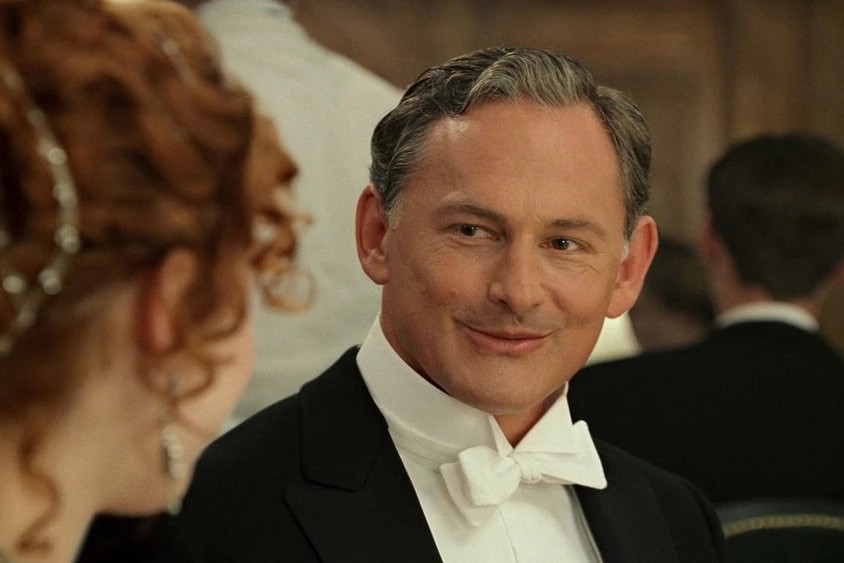
Eventually they added four more lifeboats to the final ship design. Enough for about 1,178 people, in theory. There were over 2,200 aboard.
Drawing Room Two, once a the design room for ship architects and engineers, is now a light-filled lounge where you can enjoy a coffee while looking out toward the slipways where the massive Arrol Gantry once towered over the Belfast skyline. It’s incredible to see the room side by side with an old photograph of the space.
Though the Arrol Gantry, the behemoth 270 feet tall structure used to build the ships, no longer stands there, you can imagine how such a massive engineering marvel would have dominated the Belfast skyline back in 1909.
There’s still awe in our guide’s voice as we walk over the slipways where the Titanic was built. She points out the symbolic marker where the bow of the ship would have been, one of the many little details we’d learn was designed into the Titanic Belfast building and its surroundings. It was a perfect primer. You read about a lot of this in the Titanic Experience, but hearing it told aloud, surrounded by the very buildings where decisions were made, hits differently.
Thoughtful Symbolism in the Design of Titanic Belfast
It’s easy to miss all the symbolism and tribute that was thoughtfully designed into the Titanic Belfast building and the space around it. The angular exterior panels are meant to resemble the hull of a ship cutting through the water, but they also evoke the iceberg as well.
There are four identical sides 38 meters tall, each matching the height of Titanic’s hull. It gives you perspective to appreciate how large the ship was when you in front of the building.
The massive open plaza was designed to show the full scale of Titanic’s footprint with an outline that is lit at night. A sharp tip marks the bow of the ship. Stand there, and you’re standing exactly where the ship’s front end would have started. From there, its full length stretches out towards the water, where it would have been launched into the water on May 31, 1911.
Concrete and grass alternative into the design. The grass represents those who died while the concrete represents those who survived, starting with the smaller number of passengers in first class all the way down to the crew. It’s not something I would have caught if not for the guide, but it oddly explains more than the actual numbers do. The entire grounds is effectively a memorial you’re walking through without realizing.
From the 4th floor glass windows looking out, a solid line maps the route the ship with stops in Southampton (England), Cherbourg (France), and Queenstown (Ireland). It’s not a dramatic display. No flashing lights or dramatic music. Just a line. A path. And an ending where it sank on the morning of April 12, 1912. A dotted path shows the rest of its intended course to New York.
From above, you can spot that the hidden meaning behind the arrangement and spacing of the benches in front of the building. In Morse, they spell out Titanic’s first distress call after hitting the iceberg: DE (this is) MGY MGY MGY (Titanic’s call sign) CQD CQD (emergency) SOS SOS (emergency) CQD.
Inside The Titanic Experience
The interior is a soaring atrium, open from the ground floor to the top, with walls clad in rusted steel panels designed to resemble what the Titanic’s hull might look like today, weathered by over a century on the ocean floor.
The exhibition unfolds chronologically, starting with the city that built her. Belfast was apparently a booming place in the late 19th century as the linen capital of the world. The growing industrial brought in workers from all across Ireland.
Around the same time, Edward Harland and Gustav Wolff’s company had risen to become the most important shipbuilding firm in the UK. Their eventual partnership with White Star Line led to the construction of the three massive ocean liners: Olympic, Titanic, and Britannic. The second of the two, the RMW Titanic would become the symbol of the company and the city.
Large scale exhibits, old documents and materials detail the shipbuilding process that began in 1906 with the construction of the slipways and gantry designed to hold the frame of the ship. This was one of the two most fascinating part to me, because the structure of the gantry was larger than the two ships being built simultaneously, combined.
3 Million Rivets
The other was the story of the people who worked in conditions, that would abhor today, to build the ship. I couldn’t imagine being cramped into a small crawl space hammering in individual red-hot rivets for 12 hours a day. Each team would have a person heating up a rivet and tossing it to someone who would catch it and pass it to a holder.
On the other side of a panel, two workers, one right-handed, the other left-handed, would alternate and hit at the rivet until it fills the hole and cools. Collectively, these workers put in 3 million rivets. And that was just one part of the ship-building.
Halfway through, an elevator takes you up the length of a 90 foot tall steel scaffolding that was meant to present one of the 33 columns from the Arrol Gantry. It’s huge and this was only 1/4 the height of the actual column.
And then randomly, a theme park-style ride. Not something you expect, but somehow it works gliding you in a suspended cart through a recreated shipyard, complete with the sights, sounds, and even the heat of the riveting process. It shows the sheer physicality of it all. The thousands of men. The noise, the scale, and the fire.
The Legacy That’s Not Talked About
The Titanic’s sinking is its legacy, but what’s overlooked by the average person is everything that came before. Before the iceberg. Before the lifeboats. Before the radio operator of the SS Californian, only 17-20 miles away, went to sleep.
The Titanic wasn’t just a ship. It was a feat of engineering and luxury on the waters comparable to the best 5-star hotel. A floating palace with its own Turkish baths, grand staircases, and the latest wireless telegraph technology that could reach 2,000 miles away at night.
There was a crew of 945 and a mailroom that carried over seven million letters. Even the boiler room was impressive for its scale. It’s crazy to image how much coal was necessary to power the boilers and generate the required steam for the entire ship. This was ambition and a testament to what humans could build when they push every known limit.
And then it went down. Not because of a single failure, but a cascade of them. Misjudged speed. Communication lines tied down because of the first class passengers use. And no backup binoculars.
Lost Lives Not Numbers
It was suppose to be unsinkable, so safety rules were more a guideline than a requirement. In retrospect, a chain of human decisions that feel both foolish but entirely believable, was more responsible for the sinking than the iceberg.
All of this is meticulously broken with exhibits showing how things would have been like on a normal day of sailing including a replica of the grand staircase and some of the cabins. And slowly inching towards the hours and minutes before the collision. The recorded distress calls and responses, shown chronologically, reveal just how quickly things turned bad.
And then the lives lost. Not just numbers, but records of the people from famous names like the John Jacob Astor and Benjamin Guggenheim to the many normal passengers, hoping to start a new life in America. I was particularly drawn to a copy of the lunch menu. This would have been one of the last meals for some of the passengers, detailed from the appetizer to the dessert.
On the final floor, under a massive glass panel, you can watch real footage from the wreck site, projected as if you’re looking down from a research vessel. Rusted railings. Collapsed walls. A haunting light flickering in the darkness of the deep. There’s no narration. Just the quiet hum of ocean floor and occasional sonar ping. It’s a sobering end to the experience.
How To Visit the Titanic Belfast
Around 800,000 visitors arrive each year to Titanic Belfast. That should say something.
The Titanic Hotel is a one-of-a-kind stay that lets you combines luxury with the historical significance of the building.
The Titanic Experience itself takes about two to three hours and that’s about how long I ended up spending there. The ground floor has a cafe and a couple of restaurants where you can try some of Belfast’s cuisine. Online tickets can be booked here or directly on Tiqets and also include access to the nearby SS Nomadic, the last of the White Star Line ships around today.
You’ll need to book a time slot for entry and last entry is usually around 4:20 pm.
You can get to the Titanic Quarter using the G2 Glider public transport. Lastly, while you’re in the area, you can pair it with a visit to the Titanic Distillers for their special whiskey tasting.
Updated on June 30, 2025






